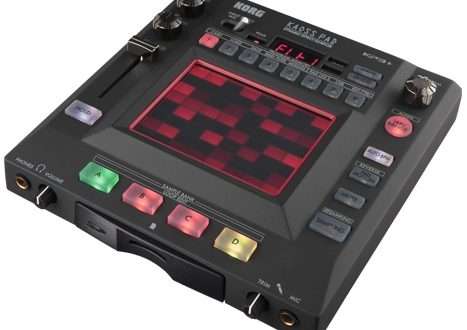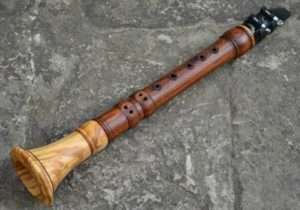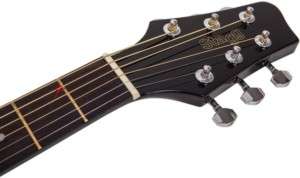
Little tricks to keep you from quitting your guitar
When you start a new business, it’s an adventure! So much unknown awaits ahead – both joys and difficulties. With joys, everything is clear, for the sake of them we try, but it is better to prepare for difficulties in advance.
What awaits a novice guitarist and what is better to foresee from the very beginning?
1. Fingers!!
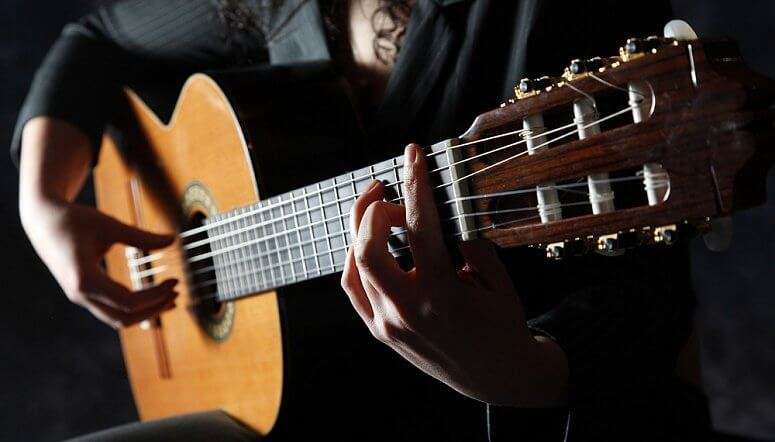
This is one of the very first and most unpleasant difficulties – pain in the fingertips.
What will help here?
1) Use nylon strings at the very beginning of playing the instrument . They are much softer, do not cut into the skin, suitable for the most delicate fingers. It is also worth keeping such strings “in reserve”, for the recovery period, when the fingers from metal strings will suffer greatly.
2) Watch the distance between the strings and the neck : it should not be too large. The greater the distance, the more you have to press on the string: you – on the string, and she – on your finger. The master in the nearest music store will help you set the ideal distance (the most comfortable is: 1.6 mm on the first fret at, 4.7 mm on the twelfth).
3) Train more often! From regular exercise, the skin on the fingers will coarsen and stop feeling pain. But follow the rule: better more often and shorter than less often and longer. Better every day for half an hour than every 2 days for an hour.
If you practice for several hours in a row on the first days of classes, you will not envy your fingers! After this, even blisters may appear. By the way, benzoin tincture and rest help from them – even for a few days (or switch to nylon strings). When the blisters are gone and the skin is rough, play again, protecting the fingers of Surgical Spirit (this is a mixture of ethyl and methyl alcohols). It will make your fingers harden faster.
4) And a few more warnings: do not play in the cold, and also with cold or wet hands; do not cut the nails of the left hand too short, it is better that they be of medium length; don’t let the calluses come off, play regularly (experiencing this pain over and over again – do you need it?). Change the strings from time to time and wipe them after playing: old strings rust, become rough – and it hurts to slide on them!
2. Landing and hand position
If the pain does not occur in the area of the fingers, but in other places, the matter may be in the wrong setting of the hands. The main thing here is to relax your hands: hold them so that they do not get tired, no matter how long you play. Here is a secret from Antonio Banderas:
To make it comfortable to play, sit on the edge of the chair, and not in the back – so the guitar does not rest against the chair. Place something like a stack of books under your left leg to keep the guitar from falling over. Place your right hand comfortably on the body. Bend your left wrist, place your thumb on the back of the neck , and four working fingers on the strings, while the knuckles should be parallel to the neck of the guitar.
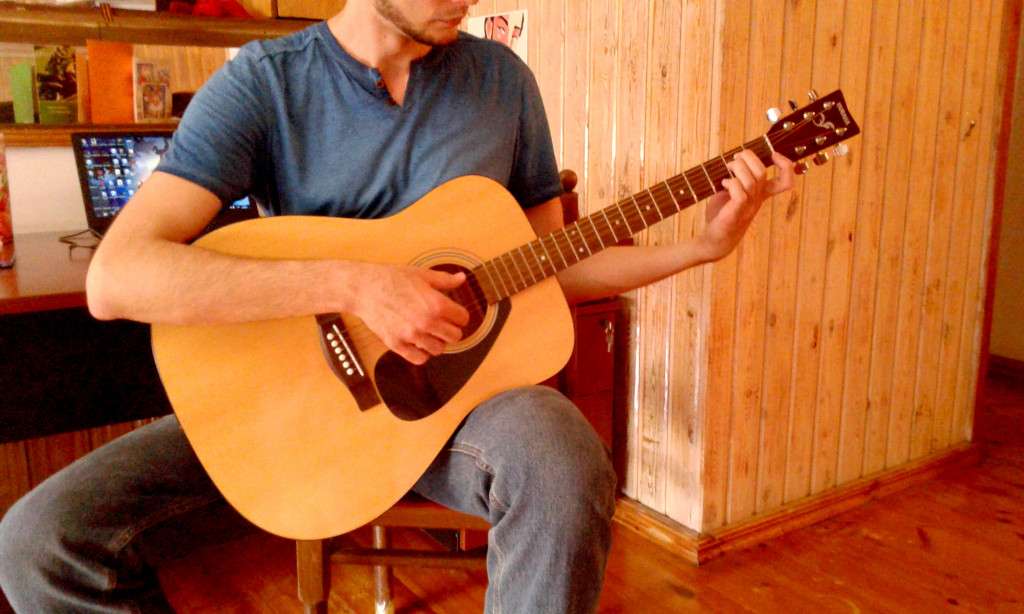
Round your left hand as if you are holding an orange in it, otherwise the fingers will not be mobile enough. For the same purpose, move the brush forward a little so that it is in front of the bar . In no case do not press your palm against the bar at the bottom. Remember: there is an orange.
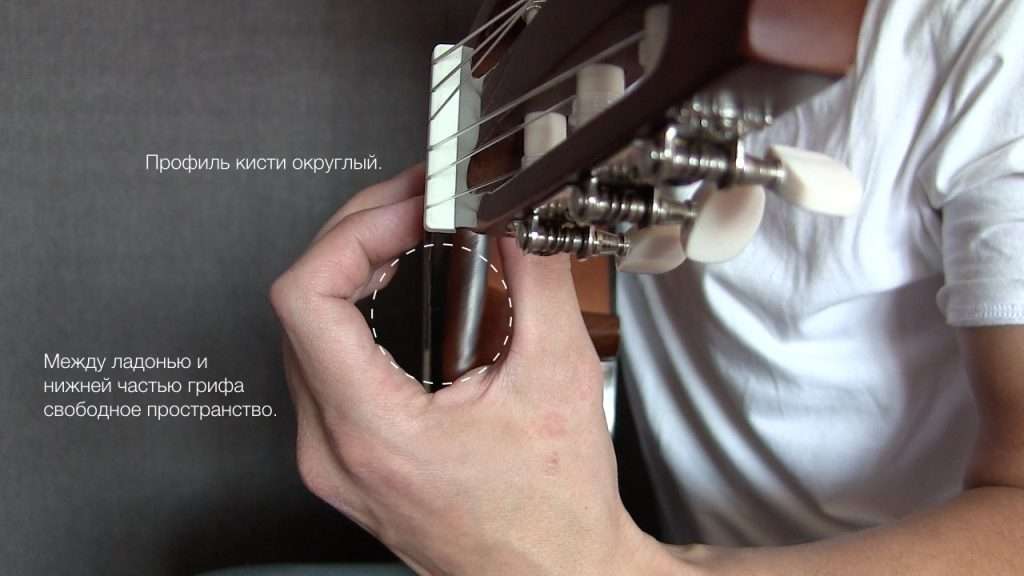
The thumb should always be behind the fretboard , and parallel to the frets , not the strings. Only if you play not on a classical guitar, but on a rock one, you can clamp the top string with your thumb.
3. First step
The ability to play the guitar is a rather flexible concept: the one who strums popular three- chord songs and the fingerstyle virtuoso can both play! For a novice guitarist, this breadth of concept is only at hand. Having mastered the necessary minimum, you will already be able to apply your skills and earn honor and respect.
So first steps:
- Learning to hold the guitar and sit correctly takes 10 to 15 minutes.
- You can learn the basic chords – and there are only 14 of them (7 major and 7 minor chords according to the number of notes: do, re, mi, fa, salt, la, si) – in a week of regular lessons. The basic course of playing the guitar by Sergey Bolshakov will help with this .
- To learn the basic searches, which are also not so many, is another week.
By and large, for basic guitar playing skills and further learning new songs, you don’t even need to learn musical notation. Knowledge of chords and plucking is the whole science. Confidence in the game and speed are achieved through regular training and replenishment of the repertoire.
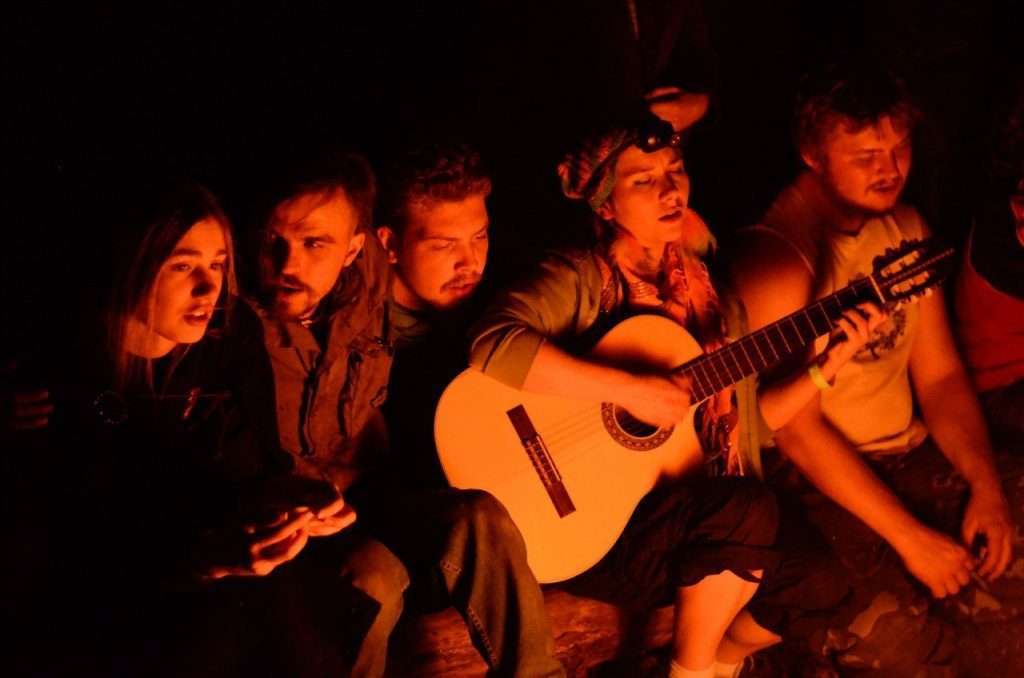
This level will be enough for the joy of the first successes, for guitar gatherings and songs in the company of friends. And also to understand whether you like the guitar or not, are you ready to move on! If yes, then now you can take up musical notation.
4. Time and desire to practice
After the first days of training, when the passion for the game subsides, the fingers hurt, the first failures befall, you will need to motivate yourself.
I recommend:
- Subscribe to video channels of virtuoso guitarists, to educational channels, to groups and blogs on the topic (for example, to our group in Vk ). They will remind you of your decision, throw up interesting ideas, and motivate you to move on. It is important here not to compare your own, still modest, successes with the skill of those who have been playing all their lives. Compare yourself only with your past self, who couldn’t even hold a guitar!
- Read more about finding time here . The main thing – do not do something boring, difficult and long. Learn easily, fun and with pleasure!
And a couple more universal tips on how to keep an interest in learning music, read in our knowledge base .




